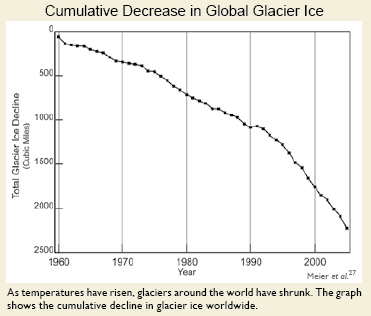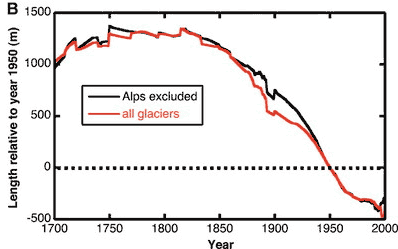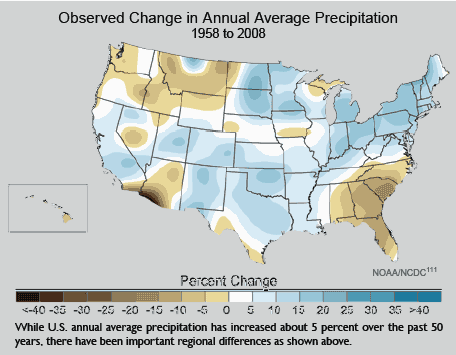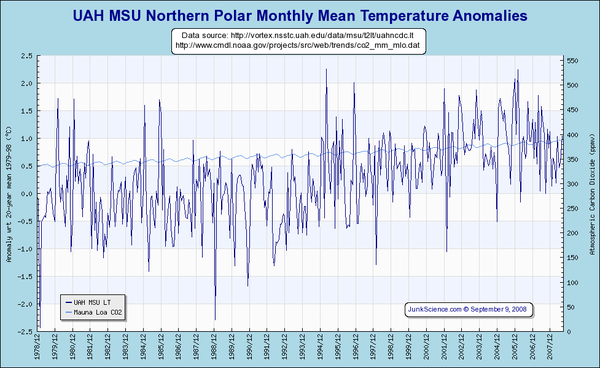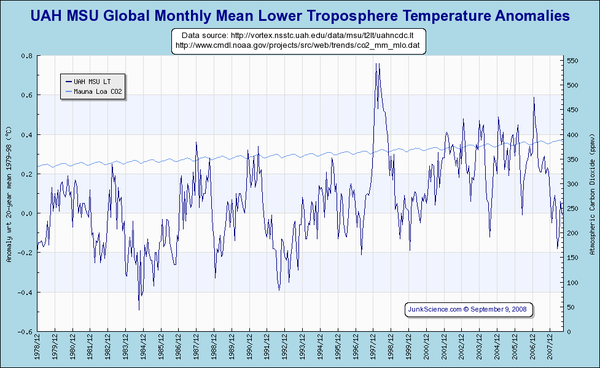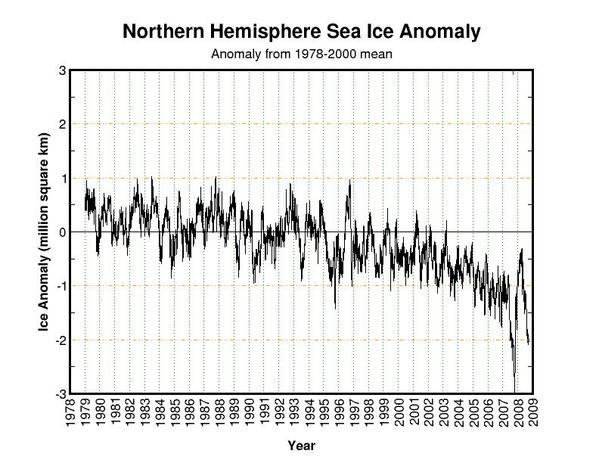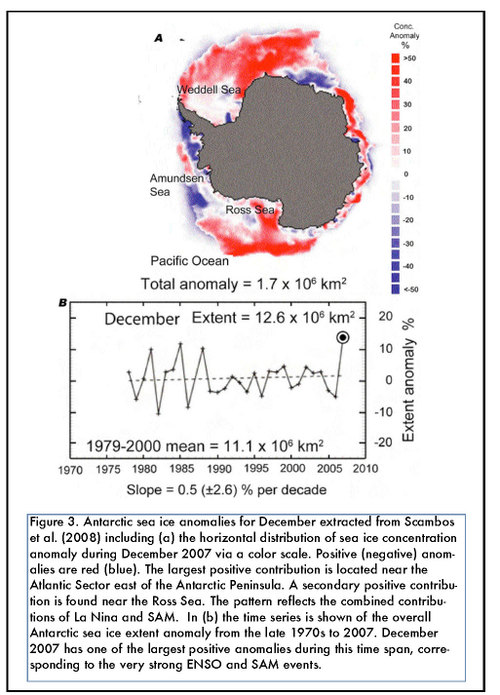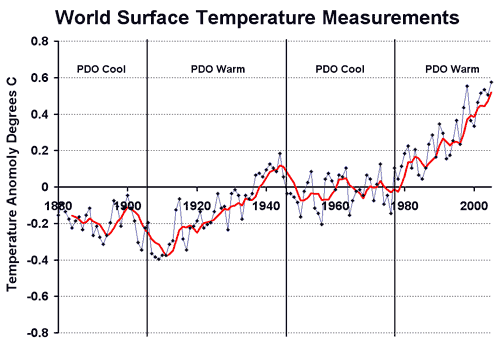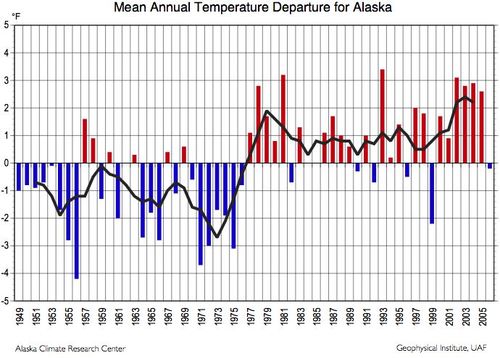In a number of portions of the report, graphs appear trying to show climate variations in absurdly narrow time windows. This helps the authors of this scientific report advocacy press release either a) blame long-term climate trends on recent manmade actions or b) convert natural variation on decadal cycles into a constant one-way trend. In this post we will look at an example of the former, while in the next post we will look at the latter.
Here is the melting glacier chart from right up front on page 18, in the section on sea level rise (ironic, since if you really read the IPCC report closely, sea level rise comes mainly from thermal expansion of the oceans – glacier melting is offset in most models by increased snow in Antarctica**).
Wow, this looks scary. Of course, it is clever chartsmanship, making it look like they have melted down to zero by choice of scale. How large is this compared to the total area of glaciers? We don’t know from the chart — percentages would have been more helpful.
Anyway, I could criticize these minor chartsmanship games throughout the paper, but on glaciers I want to focus on the selected time frame. What, one might ask, were glaciers doing before 1960? Well, if we accept the logic of the caption that losses are driven by temperature, then I guess it must have been flat. But why didn’t they show that? Wouldn’t that be a powerful chart, showing flat glacier size with this falloff to the right?
Well, as you may have guessed, the truncated time frame on the left side of this chart is not flat. I can’t find evidence that Meier et al looted back further than 1960, but others have, including Oerlemans as published in Science in 2005. (The far right hand side really should be truncated by 5-10 years, as they are missing a lot of datapoints in the last 5 years, making the results odd and unreliable).
OK, this is length rather than volume, but they should be closely related. The conclusion is that glaciers have been receding since the early 19th century, LONG before any build-up of CO2, and coincident with a series of cold decades in the last 18th century (think Valley Forge and Napoleon in Russia).
I hope you can see why it is unbelievably disingenuous to truncate the whole period from 1800-1960 and call this trend a) recent and b) due to man-made global warming. If it is indeed due to man-made global warming since 1960, then there must have been some other natural effect shrinking glaciers since 1825 that fortuitously shut off at the precise moment anthropogenic warming took over. Paging William of Occam, call your office please.
Similarly, sea levels have been rising steadily for hundreds, even thousands of years, and current sea level increases are not far off their average pace for the last 200 years.
** The climate models show warming of the waters around Antarctica, creating more precipitation over the climate. This precipitation falls and remains as snow or ice, and is unlikely to melt even at very high numbers for global warming as Antarctica is so freaking cold to begin with.

